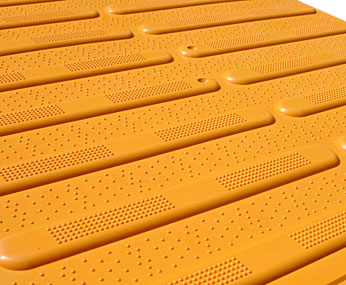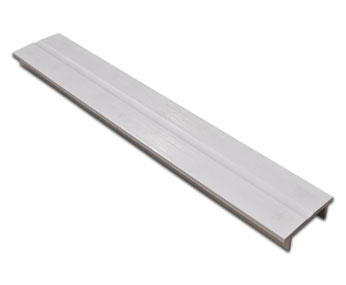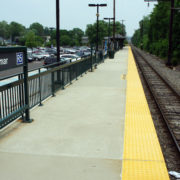5 Simple Techniques to Add Way-Finding into Your Facility
Since their development in the 1960s, tactile surfaces for the blind or partially sighted have come a long way. These tiles are usually yellow or red. For most sighted people, these look like decorative features, but they serve as very important navigational guides. Today, you’ll find many types of tactile surfaces in places like:
- Sidewalk corners
- Curb cuts
- Crosswalks
- Subway platforms
- Bus and tram stations
- Pedestrian ramps
- Any transition point between a right-of-way and roadway
- Where there are changes in surface height
Way-finding solutions, with their characteristic truncated domes and distinct coloring, are also commonly used in facilities such as:
- Hospitals: Navigating a hospital can be tricky, whether you’re visiting or are there for medical treatment. Way-finding surfaces and signage are beneficial for visitors, patients, and even staff.
- Airports: Airport terminals are busy places with different facilities. Way-finding systems can help make a flight in time, connect to a different flight, or get to loading zones or baggage claim areas.
- Hotels: Guests often need help finding check-in desks, their rooms, pools, vending machines, and other facilities, as well as elevators, escalators, or public restrooms.
- Shopping Malls: Way-finding systems are used in parking lots, at building entrances, near escalators and elevators, near larger anchor stores, and around food courts.
- Colleges/Universities: Many higher education institutions have sprawling campuses where prospective and new students can easily get lost. Way-finding solutions are often used around administrative offices, outdoor paths, and residential halls.
Simplest Way-Finding Techniques
Common tactile patterns and surfaces found in public spaces include:
- Blister Paving Pattern
Tiles with a square pattern of flat-topped blisters enable vision-impaired people and wheelchair users to identify and safely navigate a crossing where there’s little or no change in height. Offset blister tactile pavers are used on off-street Light Rapid Transit, underground rail, and heavy railway platforms. They feature flat-topped domes spaced about 2.6” center-to-center.
By comparison, the Americans with Disabilities Act (ADA) specifies truncated domes for detectable warning surfaces have a center-to-center spacing of up to 2.4”.
- Lozenge Tiles
Raised lozenges, of about 0.02” high, are arranged in rows of six. These tiles can be made of any material and are used for on-street platforms. The raised shapes can be completely round or have an oval/oblong component. Tiles are placed roughly 15.7” to 19.7” parallel to the platform edge to provide ample warning time.
- Along Strip Tactile Paving

Otherwise known as corduroy hazard warning patterns, these tiles consist of rounded bars that run parallel to one another on a walking path. Each tile has six bars in a row that are about 0.02” high, 0.8” wide, and spaced just under 2” center-to-center. Across strips are used near level crossings or at the top and bottom of stairs, at the foot of a ramp, or pedestrian path where it joins a shared route.
- Directional Bars
At ADA Solutions, our Bar Tile is constructed with 11⅜” long x 1⅜” wide bars, the centers of each spaced 3” apart, oriented in the direction of travel. A non-slip surface ensures the safety of pedestrians who rely on this way-finding solution. We offer raised-tile bars in 6” x 24”, 12” x 12”, and 24” x 24” dimensions.
- Guide Surface Tiles

These serve a similar function to other tactile wayfinding solutions, except feature a depressed groove rather than raised lines or domes. Our Guide Tile has a groove that is ⅝” wide x 1/16” deep and centered on a 4” wide x ¼” thick sloped surface bar tile. It also features a non-slip surface. Like our directional bars, it is available in replaceable and surface mount versions.
Order Wayfinding Products from ADA Solutions
We offer a full catalog of industry-standard way-finding tactile surfaces for blind and visually impaired people. These include Directional Bar, Guide Surface Tiles, and surface-applied and cast-in-place replaceable detectable warning surfaces. All our products are ADA-compliant and slip-resistant. To learn more, request a quote or call 800-372-0519 to speak with our knowledgeable detectable warning experts.




